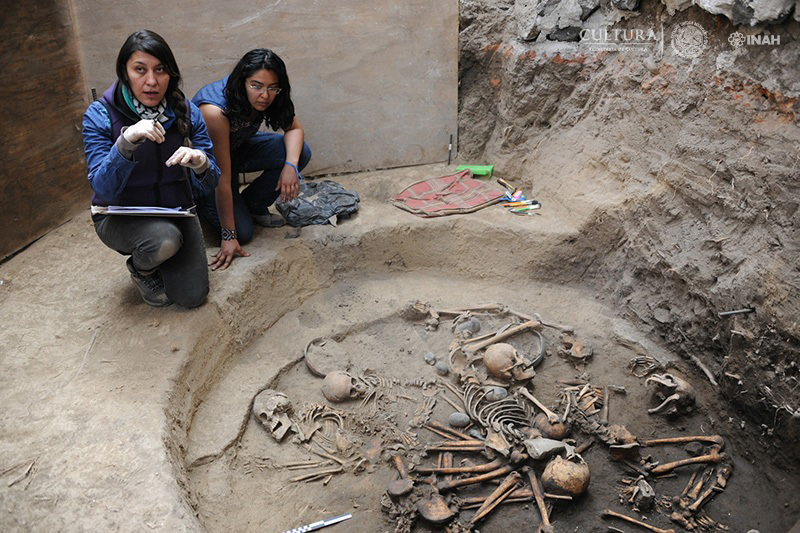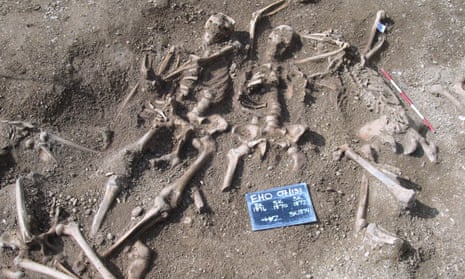Ten human skeletons, arranged lying on their sides in a circle with their arms intertwined, have been unearthed in an ancient burial pit to the south of Mexico City. The roughly 2,400-year-old bones represent the first time anything like this has been discovered, according to a statement from the National Institute of Anthropology and History, or INAH.

Two of the skeletons have been identified as female and another one as male; the rest are still being studied. Most of them belonged to adolescents, but the researchers have also identified one skeleton as that of an adult, another of a child between three and five years old and another of a baby about one month old, according to the INAH statement. While the cause (or causes) of death remains unclear, their careful positioning suggests a mysterious ritualistic component to the burial.
Archaeologists made the discovery on the lands of the Pontifical University of Mexico, or UPM. The “spiral of human bones” was the most unusual finding that any INAH archaeologist has made since beginning field work in the area more than a decade ago, according to the institute’s statement.
The bodies had been buried with cajetes and tecomates—earthenware bowls and pots of various sizes—and in some cases were “holding” stones or ceramic spheres. Some of the skeletons showed evidence of deliberate, ritualistic deformation of their skull shape and teeth—a widespread practice among a number of indigenous cultures, according to the BBC. Members of many ancient empires would elongate their skulls by using wooden boards to flatten the foreheads of infants, whose skulls are still relatively soft and pliable, according to Atlas Obscura.

The bones correspond to Mexico’s Pre-Classical period, which predates the Aztec Empire, according to National Geographic. Tlalpan, the ancient village associated with the burial, appeared to exist for approximately 500 years, according to the statement.
INAH archaeologist Jimena Rivera Escamilla believes the discovery will lead to a more complete understanding of the indigenous inhabitants who lived in the Basin of Mexico during the Middle and Late Formative period, which corresponds to roughly between 700 B.C. and 200 B.C., according to the INAH statement.

That places the skeletons in a much earlier era than that of the Aztec Empire, one of the most widely known pre-Colombian civilizations, which wouldn’t come to power until around the 16th century, according to National Geographic.








